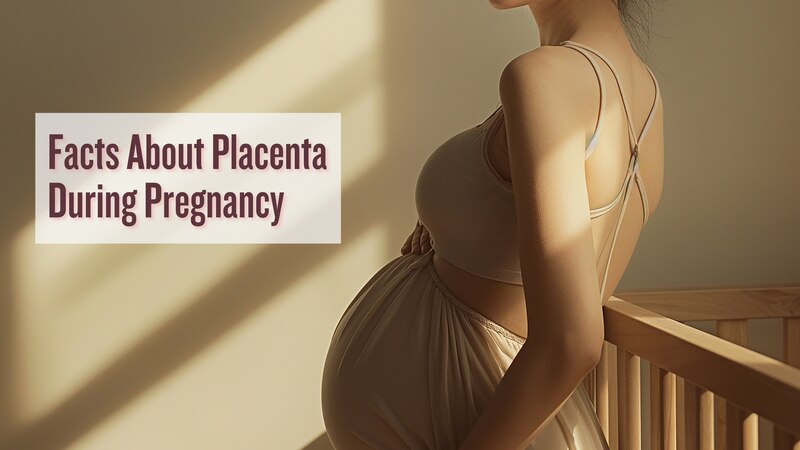 Did you know, that when you get pregnant, you grow another organ in your body to house that tiny human? The organ exists as long as the pregnancy persists, and then it goes away just like that.
Did you know, that when you get pregnant, you grow another organ in your body to house that tiny human? The organ exists as long as the pregnancy persists, and then it goes away just like that.
This miraculous organ is what keeps that baby safe and sound till it’s time to come into the world. The placenta’s safety and proper functioning are very important for a successful pregnancy. Read on to learn more about the placenta and its crucial role in pregnancy.
What is Placenta?
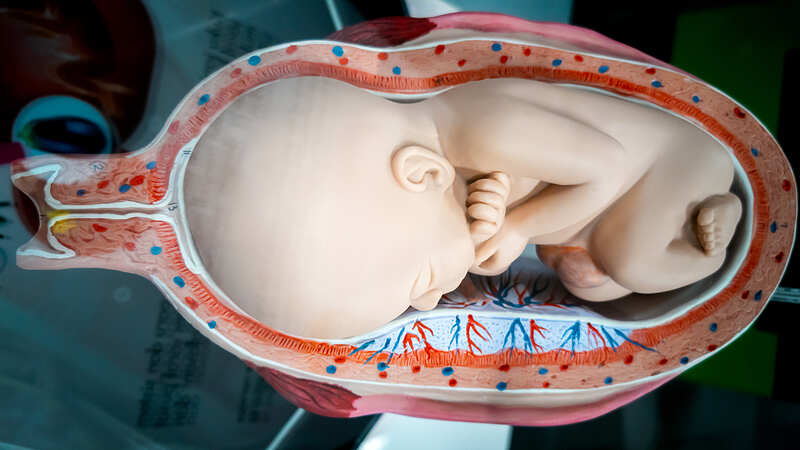
So let’s start at the very beginning. When you find out about your pregnancy, your body has already grown a new organ called the ‘placenta (1). This organ is attached to the uterus and now houses the fetus. The placenta, during pregnancy, is generally attached either to the top or side of the uterus.
The “womb,” in which the infant grows, is a topic of conversation. It is common knowledge that the “uterus” is the most crucial organ for achieving pregnancy. However, there is a lack of broad information regarding the placenta. During pregnancy, a lot of mothers learn about the placenta via their doctor or from internet research.
The placenta filters out all unnecessary things and sends in only what is required for the growing fetus. The oxygen, glucose, and all other nutrients that are required for the baby’s growth pass from the mother’s blood, through the placenta during pregnancy.
Placenta During Pregnancy

So, what exactly happens to the placenta during pregnancy? Let’s find out!
- The placenta during pregnancy is developed somewhere towards the bottom of your womb.
- It then slowly moves up or to the side and attaches itself to the uterus.
- It stays in the body till the end of the pregnancy.
- The umbilical cord is the connection between the baby and the placenta during pregnancy.
- The placenta detaches itself from the uterine wall when it is time for delivery.
- Once the placenta detaches, the baby stops receiving everything from the mother, including oxygen.(2)
- It is expelled after the child’s birth. Yes, unfortunately, you may have to “deliver twice” when you deliver your baby.
Some Interesting Facts About Placenta
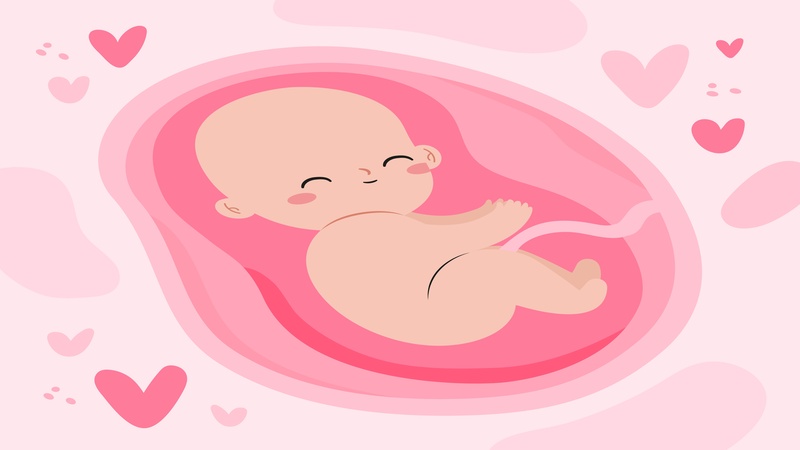
There are a whole lot of things to know about the placenta during pregnancy. Read on, and you may be surprised by this wonderful ‘temporary’ organ in your body.
1. The placenta keeps the mother’s and fetus’ blood separate
Did you know that the mother and the baby do not share blood during the entire pregnancy? (3) Yes, during pregnancy, the placenta ensures the mother’s blood does not mix with that of the baby. Hence, the placenta, during pregnancy, gives the baby a different blood group from the mother’s in many cases.
2. The Placenta produces hormones
The placenta during pregnancy is responsible for producing all the hormones required. Estrogen, lactogen, and progesterone are some of the important hormones required during pregnancy. The HCG (Human Chorionic Gonadotropin) that confirms pregnancy is produced by the placenta. (4). These have to be maintained at the right levels for a healthy and safe pregnancy.
Furthermore, the mother’s body needs time to prepare itself to feed the baby after delivery. The placenta during pregnancy takes care of this important process. The various hormones and nutrients required for breastfeeding are also produced by the placenta during pregnancy. (7)
3. Placenta Passes Food To The Fetus
We all know about the umbilical cord (5). Many of us don’t know that it is the placenta during pregnancy that passes all the “food” for the baby through this cord. The umbilical cord’s cutting is how the baby is separated from the placenta – and thus from the mother’s body.
4. Placenta Provides a Protective Shield For the Baby
Have you heard of stories where the mother might suffer some illness but it wouldn’t have affected the baby in the least? This is because the placenta during pregnancy ensures the baby is safe from all infections that might be present in the mother’s blood.
What’s more, one of the important facts about the placenta is it passes antibodies to the baby, towards the end of the pregnancy (6). These antibodies are very important for the survival of the baby outside the womb.
Though the placenta acts like an invisible shield protecting the baby, it is not immune to everything. Drugs, alcohol, and medicines can pass through the placenta during pregnancy and reach the baby. This is precisely why doctors ask mothers to be very careful and quit all damaging habits at least for the course of the pregnancy.
What Is Placenta Delivery?
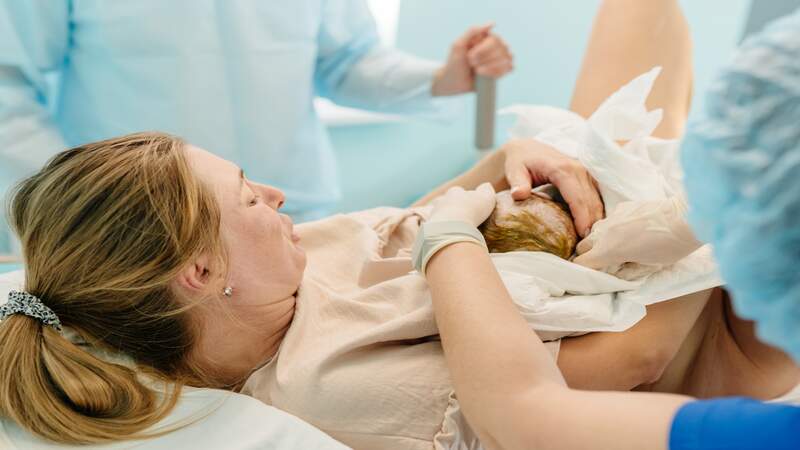
Once you deliver that beautiful baby and meet them for the first time, your joy knows no bounds. However, you still have some work left before you can start cherishing that little bundle. Remember the placenta that has been connecting you and the baby all these months? You will have to deliver it to expel it from your body. The new mother has just gone through hours of labor and must be beyond tired. So, why is it absolutely necessary to deliver this placenta?
The placenta during pregnancy has a major role and once the pregnancy comes to an end, so does its role. The organ itself becomes nothing but dead tissue. If this placenta is not expelled completely from the body, it can rot away inside the mother’s body. Even a tiny bit of placenta left behind after surgery can be not just harmful but very poisonous to the mother. (8)
What is Lotus Birth?

Not many know of this, and hence awareness about this type of birth is very minimal. Lotus birth (9) is where the umbilical cord is not cut, once the baby is delivered. This type of birth follows the belief that the baby can continue to get important nutrients even after the placenta delivery. The mother is helped to deliver the placenta while the baby is still attached to it. This ensures every last bit of nutrients possible from the mother’s body is transferred to the baby.
What Are The Possible Abnormalities Of the Placenta?
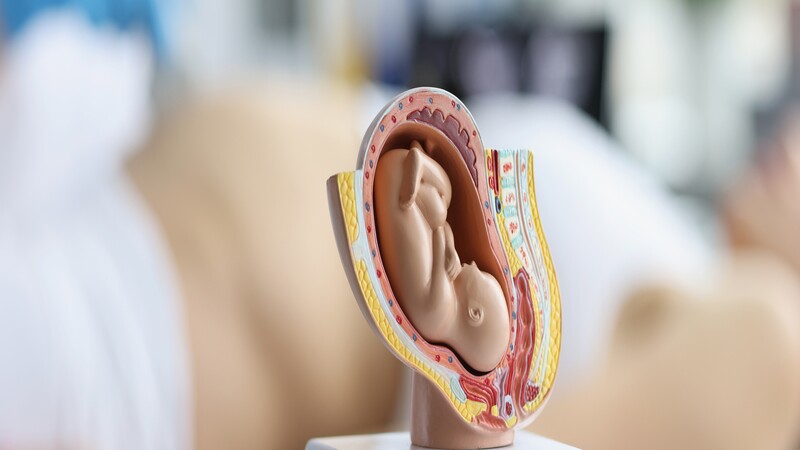
While the role of the placenta during pregnancy can awe us, there are some abnormalities of the placenta we need to be aware of too. Since we know the placenta during pregnancy is very important for not only a healthy pregnancy but for a healthy baby as well, a little “malfunctioning” of this organ can cause a lot of trouble- mentally, if not physically, in some cases!
Following are some possible abnormalities of the placenta during pregnancy:
1. Placental Insufficiency
This is an uncommon abnormality of the placenta experienced by expecting mothers (10). If the placenta during pregnancy does not develop as required, it cannot produce the required hormones. A shortage of hormones can affect both the pregnancy and the unborn baby. Low birth weight, growth restrictions for the fetus, hormonal imbalance in the mother are some of the outcomes if the placenta during pregnancy does not function properly.
2. Infarcts
A rare occurrence – the presence of dead tissues inside the placenta, more than what the body can handle. The dead tissues inside the placenta are known as infarcts. All placentas generally have a few infarcts throughout the pregnancy. However, when these increase, it reduces the blood flow in the areas where the dead tissues are present. The pregnant mother’s severe hypertension experience can increase these infarcts, thereby increasing the “complications” that come with increased infarcts in the placenta during pregnancy.
3. Preeclampsia
This is one of the common and problematic abnormalities of the placenta. (11) So, your doctor checks your blood pressure and protein content in your urine, from time to time during your pregnancy. Have you ever wondered why? Your gynecologist keeps a tab on your blood pressure to ensure preeclampsia doesn’t occur.
High blood pressure is one of the leading symptoms in addition to:
- Gaining weight excessively in a short span of time
- Swelling of fingers, hands, and even legs
- Headaches
Since the above three symptoms are synonymous with pregnancy, they can be missed easily. However, if you see a drastic change, it never hurts to get it checked by your doctor.
What is Placental Abruption?
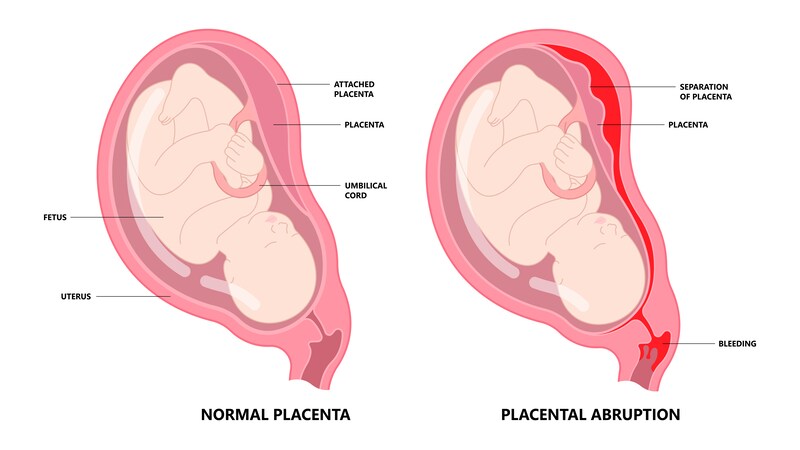
The placenta during pregnancy is attached to the uterine wall throughout. It detaches itself from the uterus only when it is time for delivery. However, in rare cases, this abruption can occur sooner, thereby resulting in unwanted complications. (12)
The abruption can be either partial or complete.
-
- When the placenta suffers an abruption during pregnancy, it can lead to significant bleeding that requires monitoring. The extent of the abruption correlates with the amount of bleeding. The more the abruption, the more bleeding.
- If the fetus is developed enough to survive outside the womb, a cesarean section may be performed to deliver the baby.
- If the placental abruption occurs early in the pregnancy, it prevents the baby from receiving any required nutrients or even oxygen from the mother. Thus causing either the death of the baby or requiring the pregnancy to be terminated.
- Mild bleeding can be handled with continuous observation. However, heavy bleeding might require an emergency cesarean section to ensure the baby’s survival.
Though the occurrence of such an event is less than 1%, it is the leading cause of death for unborn or newborn babies. High rates of fetal growth restriction, as well as premature births, are associated with placental abruption, understandably so.
Symptoms Of Placental Abruption
Here are some symptoms that may indicate a placental abruption during pregnancy. However, only an ultrasound can confirm the diagnosis.
- Bleeding vaginally
- Uterine pain
- Uterine contractions that persist
- Abnormal fetal heart rate
When Should You Be Worried?
Certain women are more prone to placental abruption than others. You need not worry about being part of that category unless:
- You have had a placental abruption earlier.
- There is a history of abruption of the placenta during pregnancy in the family.
- Trauma to the abdominal area due to an accident
- Defects in the uterus
- Cigarette smoking or substance abuse
- Circumvallate placenta – which is very rare
What is Placenta Accreta?
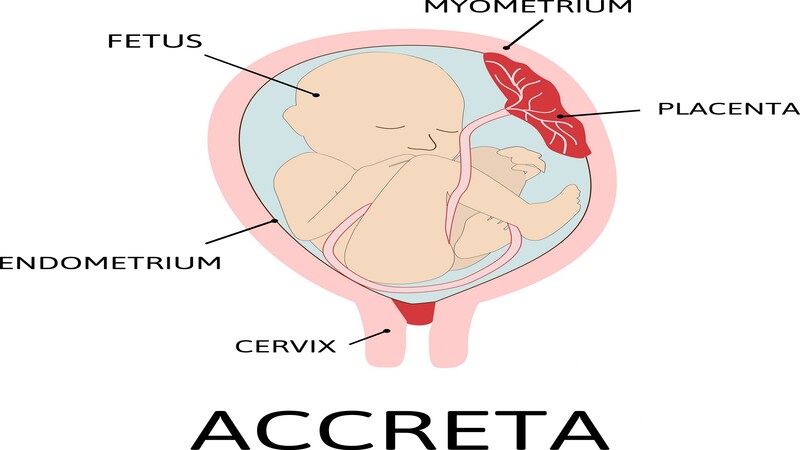
When the placenta during pregnancy grows very deeply into the uterus’ inner wall, the attachment is very firm. This strong attachment will prevent it from separating easily and properly after the child’s birth. This attachment of the placenta during pregnancy can cause severe bleeding after delivery. Emergency surgery may be required even if it was a vaginal birth. Sometimes, the bleeding is so severe and unstoppable that the entire uterus may have to be removed to save the mother. (13)
What Are The Types Of Placenta?
Did you know there are different types of the placenta? The types of placenta during pregnancy differ from species to species. However, since we are dealing with only humans here, let’s just stick to types of placenta during pregnancy in a human. Generally, the position of the placenta in pregnancy is referred to as the type of placenta.
The types of placenta you can hear about are:
- Posterior Placenta – Back of the uterus
- Anterior Placenta – Front of the uterus
- Fundal Placenta – Top of the uterus
- On the side of the uterus
- Placenta Previa– Bottom of the uterus covering the cervix
Placenta Positions In Pregnancy
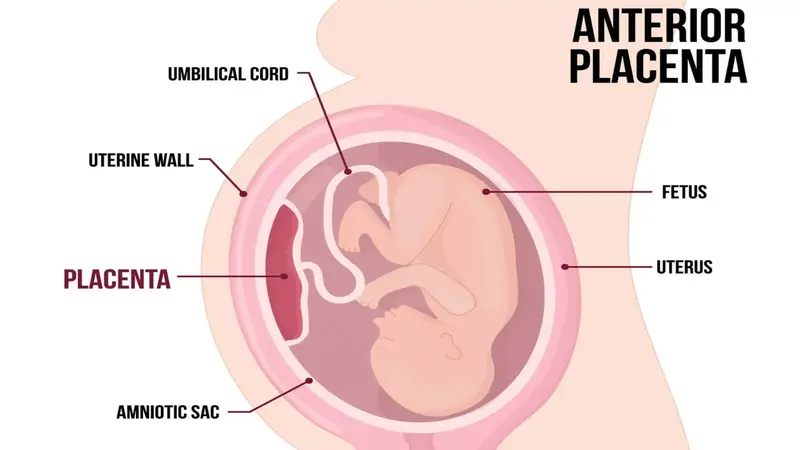
The placement of the placenta during pregnancy is extremely important for the successful outcome of the pregnancy. As this organ develops, it can float and attach itself to any part of the uterus. It normally will attach to the upper or the sides of the uterine wall. However, in rare cases, it can attach to other areas as well.
1. Anterior Placenta During Pregnancy
When the placenta during pregnancy attaches itself to the front of the uterus, it is known as an anterior placenta. Anterior placenta during pregnancy can make it difficult for the mother to feel the growing baby’s kicks. It may take longer for these mothers to feel the first movements of their baby. (15)
Also, the anterior placenta during pregnancy can make it difficult for the doctor to find the fetus’s heartbeat. This does not mean there is anything wrong. Your ultrasound may take more time. A well-experienced doctor should be able to maneuver around the uterus well irrespective of the position of the placenta.
Anterior Placenta and Gender
Though not backed by any concrete research, a mother with an anterior placenta is believed to be carrying a girl.
2. Posterior Placenta During Pregnancy
When the placenta during pregnancy attaches itself to the uterine wall’s back, it is known as a posterior placenta (14). The posterior placenta during pregnancy allows the mother to feel that flutter kicks very early in the pregnancy. Feeling those tiny movements are very exciting for every mother.
This position of the placenta during pregnancy can also make it easier for the doctor to find the heartbeat and monitor other movements of the baby. The posterior placenta during pregnancy is believed to be an optimal position.
Posterior Placenta and Baby Gender
Any research does not back the posterior placenta gender correlation. However, this type of placenta is believed to house a boy baby.
3. Placenta on the Sides
This type of placenta is not commonly discussed, even though it occurs as frequently as a posterior or anterior placenta. In this case, the placenta will attach itself to either the right or left side of the uterine wall during pregnancy.
What is Placenta Previa?
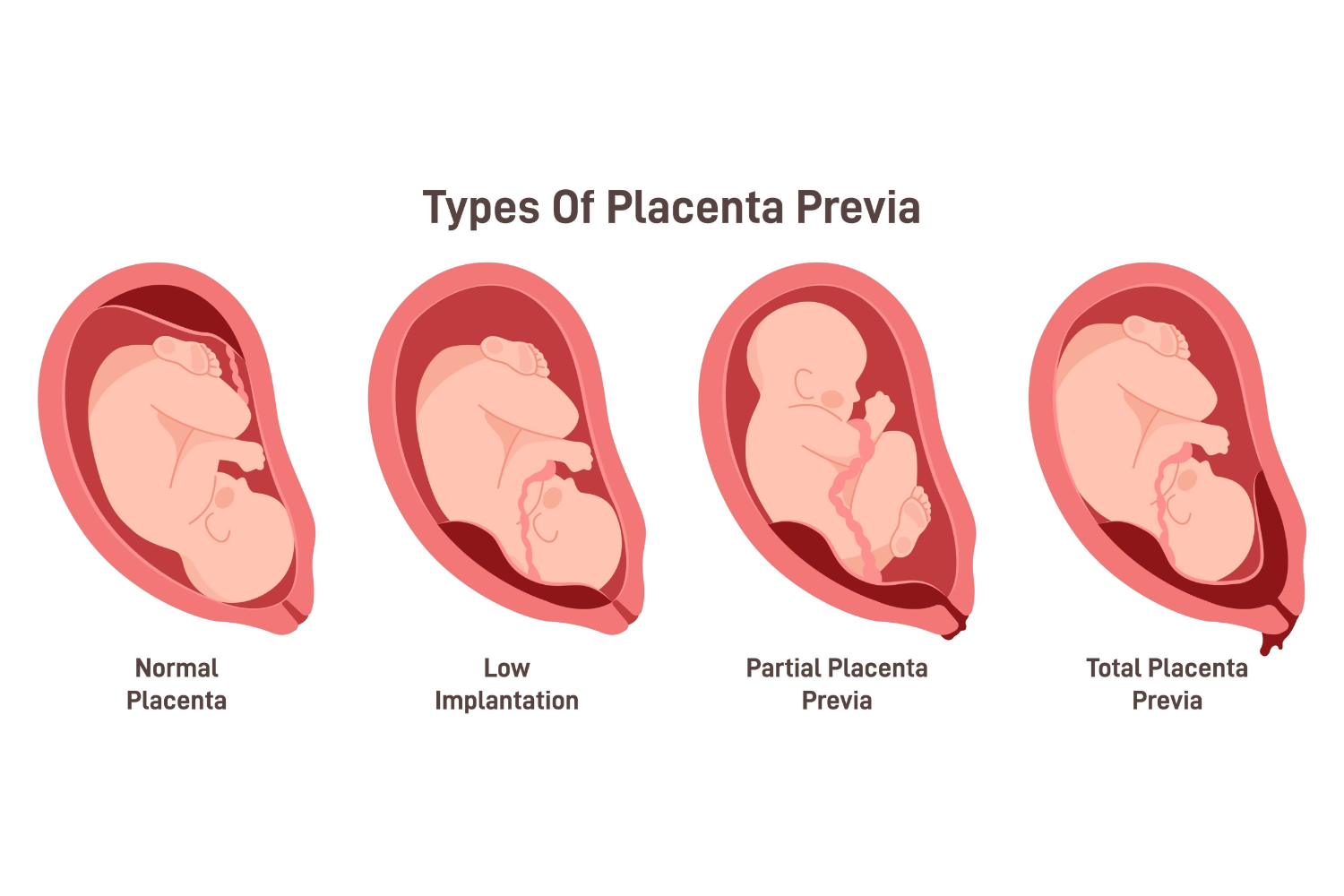
This is a condition where the placenta during pregnancy attaches itself to the lower part of the uterus instead of the upper part. Placenta previa is observed to occur more in certain races of women. The chances of such a placenta position in pregnancy are higher if you have had a cesarean section or an abortion earlier. Now don’t worry; this happens in less than 1% of pregnancies. So, unless your gynecologist is concerned, you need not fret over this rare condition.
1. Partial Placenta Previa
In this type of placenta, the opening of the cervix is partially covered. This type of placenta during pregnancy allows a good chance for vaginal delivery.
2. Marginal Placenta Previa
This is when the position of the placenta during pregnancy does not completely block the cervix. As the baby grows, the placenta can move away from the cervix, thereby increasing the chances of vaginal birth.
3. Complete Placenta Previa
This is when the placenta during pregnancy completely blocks the cervix (16). This makes a vaginal birth impossible, thereby resulting in a cesarean section.
What is a Low-Lying Placenta?
This is when the placenta during pregnancy attaches itself towards the bottom of the uterus. In this type of placenta, the mother might be put on bed rest for the major part of the pregnancy. This is to ensure the increasing weight of the fetus does not push against the cervix, causing it to open. If not taken care of, this type of placenta can lead to a miscarriage or a premature delivery. (17)
What is Placenta Position Gender Prediction?
The placenta position in pregnancy is often believed to help determine a baby’s gender, although this is not supported by research. In India, gender determination is illegal. Couples can guess the baby’s gender and wait until birth to determine whose prediction was correct. However, a baby is a gift and should not determine love or talents. The placenta position during pregnancy is more important than gender. and a final ultrasound is required to confirm the position and prepare for delivery, especially in cesarean sections.
Do remember that the position of the placenta during pregnancy can change from trimester to trimester. This is why a final ultrasound towards the end of the pregnancy is required. This scan will confirm the position of the placenta and help your doctor prepare for delivery. In the case of a cesarean section, the placenta position is extremely important.
FAQ’s
1. How Do You Know If You Have a Placenta Problem in Pregnancy?
If you experience bright red vaginal bleeding or notice the baby is moving less, it could indicate placental issues. In some cases, the expecting mother will not gain weight as anticipated. The only way to confirm it is through an ultrasound.
2. How Can You Tell If The Placenta is Healthy?
Routine tests and ultrasounds during pregnancy can determine if the placenta is healthy and in the right position. If you do not experience any vaginal bleeding, discomfort, or preeclampsia, your placenta is most likely healthy.
3. What Happens If the Placenta Is Lies Low In Pregnancy?
A low-lying placenta may not move and align in time for a vaginal delivery. Low-lying placenta or placenta previa may result in a preterm delivery or require a cesarean delivery to ensure the safety of both the baby and the mother. In some cases, the doctors will keep a close watch via multiple ultrasounds or scans.
References
- Herrick EJ, Bordoni B. Embryology, Placenta, Foundation Don Carlo Gnocchi IRCCS: https://www.ncbi.nlm.nih.gov/books/NBK55163/
- Children’s Hospital of Philadelphia, Blood Circulation in the Fetus and Newborn: https://www.chop.edu/conditions-diseases/blood-circulation-fetus-and-newborn
- Nicole Levine, Five Things We Know About the Placenta—and a Few We Wish We Did, https://www.cedars-sinai.org/discoveries/placenta.html
- Yale School of Medicine/Obstetrics, Gynecology & Reproductive Sciences/Reproductive and Placental Research Unit: https://medicine.yale.edu/obgyn/kliman/placenta/placenta-info/
- Basta M, Lipsett BJ. Anatomy, Abdomen and Pelvis: Umbilical Cord. St. George’s University, School of Medicine: https://www.ncbi.nlm.nih.gov/books/NBK557389/
- Yale School of Medicine/Obstetrics, Gynecology & Reproductive Sciences/Behind Every Healthy Baby is a Healthy Placenta – https://medicine.yale.edu/obgyn/kliman/placenta/placenta-info/
- Jaclyn Pillay; Tammy J. Davis, University Health Survey: https://www.ncbi.nlm.nih.gov/books/NBK499981/
- Medically Reviewed by Traci C. Johnson, MD, on April 19, 2023, What Is a Retained Placenta? – https://www.webmd.com/baby/what-is-retained-placenta#
- Bonsignore, A., Buffelli, F., Ciliberti, R. et al. Medico-legal considerations on “Lotus Birth” in the Italian legislative framework. Ital J Pediatr 45, 39 (2019).- https://ijponline.biomedcentral.com/articles/10.1186/s13052-019-0632-z#
- Wardinger JE, Ambati S. Placental Insufficiency. Penn State/Hershey Medical Center, Albany Medical Center—https://www.ncbi.nlm.nih.gov/books/NBK563171/
- Preeclampsia and high blood pressure during pregnancy. American College of Obstetricians and Gynecologists. https://www.acog.org/womens-health/faqs/preeclampsia-and-high-blood-pressure-during-pregnancy. Accessed Jan. 3, 2022. – https://www.acog.org/womens-health/faqs/preeclampsia-and-high-blood-pressure-during-pregnancy
- Pamela Schmidt; Christy L. Skelly; Deborah A. Raines, Sisters of Charity Hospital, Florida Southern College, https://www.ncbi.nlm.nih.gov/books/NBK482335/
- Elizabeth J. Herrick; Bruno Bordoni. Embryology, Placenta. https://www.ncbi.nlm.nih.gov/books/NBK551634/
- Medically reviewed by Andrea Chisholm, MD FACOG, What Is Posterior Placenta? https://www.parents.com/posterior-placenta-how-it-affects-pregnancy-and-delivery-7561506#
- Medically Reviewed by James Greenberg, M.D. | November 4, 2021 – https://www.whattoexpect.com/pregnancy/ask-heidi/anterior-placenta.aspx#
- Mayo Clinic, Placenta Previa: https://www.mayoclinic.org/healthy-lifestyle/pregnancy-week-by-week/in-depth/placenta/art-20044425#
- NHS, What complications can affect the placenta? – https://www.nhs.uk/pregnancy/labour-and-birth/what-happens/placenta-complications/

